#Solandra maxima
Explore tagged Tumblr posts
Text






#cup of gold#golden chalice vine#solandra maxima#toxic plants#flowering vines#flower buds#fallen flowers#san diego
3 notes
·
View notes
Text

Solandra Maxima, cup of gold vine (the cup is gold, the vine is cup of gold, it's not a cup that contains gold vine), Golden Chalice (do not drink out of this), and Hawaiian lily, all stuffed into this single picture. Pretty amazing what compression algorithms can do these days.
#golden chalice#hawaiian lily#solandra maxima#original photographers#photographers on tumblr#macro photography#flowers of tumblr#flowers on tumblr#inner life of flowers#macro flower#flowers
8 notes
·
View notes
Text

Cup of Gold Vine (Solandra maxima) [oc] - Author: abcphotos
53 notes
·
View notes
Link
Autor: Olga Guedes
0 notes
Photo





Solandra maxima, Solanaceae
Within the resort where I was staying in, on the southern coast of Lanzarote, I found the winner of the category ‘showiest flower of the holiday’, and I was so happy it was a yellow one! Cup of gold is a stunning, vigorous liana native to Mexico, Central America and northern South America, where it grows on well draining soils in sunny locations, scrambling over anything which might support the weight of its heavy, heavily branching, woody stems. I’ve seen only three plants in total, two of them were grown as round, free standing, 2.5m/~7ft tall shrubs, while the last was beginning to send a few stems creeping up a wall, but it can grow extensively to completely cover walls or porches in warm, frost free parts of the world.
The flowers are large, trumpet-shaped and a warm, golden yellow, with five prominent maroon markings in correspondence with the main veins. They are reminiscent of those of two other large-flowered Solanaceae, the moonflower (Datura inoxia) and the angel trumpet (Brugmansia suaveolens), and all three species share the fact they’re highly toxic, with various effects, and are manipulated for this reason. Maybe I just didn’t notice more of these plants while walking around, but maybe it’s just not that common there, although its resistance to salty winds makes it an excellent candidate for ornamental planting in coastal areas.
Bonus: two of the photos feature a white-banded digger bee (Amegilla quadrifasciata), a solitary, burrowing bee widespread from the Canary Islands through the Mediterranean and Southern and Central Europe to Central and East Asia. With its striking coloration I think I’d remember having seen it before in Italy, but I don’t think I had. Also, S. maxima is generally pollinated by nocturnal bats in its natural range, but bees are happy to oblige in their absence.
#solandra maxima#cup of gold#solanaceae#liana#vines#plant identification#plant photography#botany#plantblr#flowers#horticulture#gardeners on tumblr#shrubs#toxic plants#lanzarote#canary islands#amegilla quadrifasciata#white-banded digger bee#bees
247 notes
·
View notes
Photo
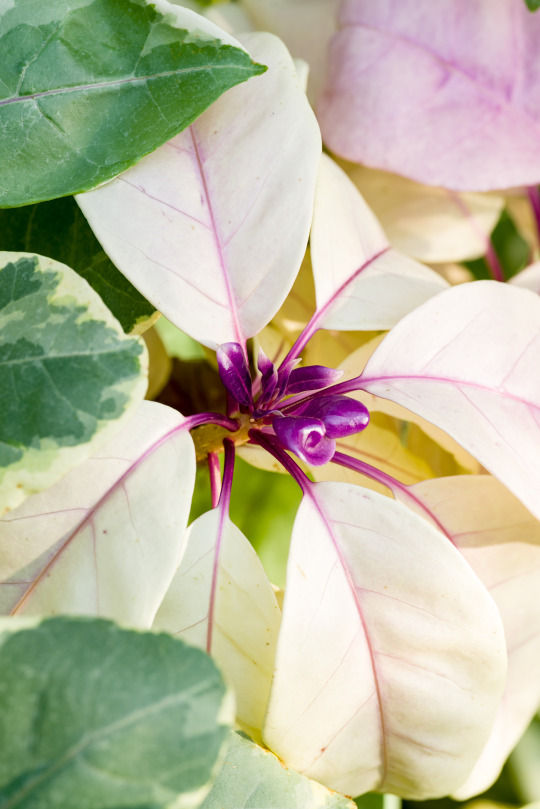
#solandra maxima 'Warrimoo'#Jindai Botanical Garden#Tokyo#ソランドラ・マキシマ ’ワリモー’#神代植物公園#東京#Voigtlander Macro APO-Lanther 125mm F2.5 SL
11 notes
·
View notes
Video
Tasse d'or, nom scientifique : Solandra maxima par Alain DID Via Flickr : Une fleur ensoleillée dans un jardin tropical de Guyane Française.
#fleur#bokeh#nature photograph#natural world#nature pics#natural light#Nature#jaune#macrophotography#macronature#Amazonie#Guyane#colors#be#Beauty In Nature
3 notes
·
View notes
Photo

Solandra maxima. Centro de Jardinería, Puerto del Rosario. Fuerteventura, March 2019.
#plants#flowers#solanaceae#fuerteventura#canary islands#canarias#macaronesia#photography#agavex-photography#2019#canon eos 750d
11 notes
·
View notes
Text
1 - 5 January 2020
I managed to pull together all the plants blooming in the garden on New Year’s Day, even though I didn’t work it this year. I went around on 31 December and again on 2 January. This year these taxa were flowering:
Abutilon × milleri
Acacia baileyana 'Purpurea'
Acanthus sennii
Achillea millefolium
Adlumia fungosa
Ageratina ligustrina
Ajuga reptans
Alonsoa incisifolia
Alonsoa warscewiczii
Alstroemeria aurea
Amicia zygomeris
Ammi majus
Anagyris foetida
Angelica archangelica
Anisodontea capensis
Antirrhinum majus
Arbutus canariensis
Arbutus unedo f. rubra
Argyranthemum pinnatifidum subsp. pinnatifidum
Asterotrichion discolor
Banksia integrifolia var. compar
Bergenia × schmidtii
Bergenia crassifolia
Bidens aurea
Blumenbachia insignis
Camellia sasanqua 'Hugh Evans'
Camellia sinensis
Carum carvi
Cestrum parqui
Cestrum psittacinum
Chamaemelum nobile
Chimonanthus praecox
Chimonanthus praecox Grandiflorus Group
Cistus creticus
Cneorum tricoccon
Cobaea scandens
Colletia hystrix 'Rosea'
Colletia paradoxa
Convolvulus cneorum
Coronilla valentina subsp. glauca 'Citrina'
Correa backhousiana
Cyanus segetum
Cytisus canariensis
Dahlia imperialis
Dahlia pteropoda
Delphinium × belladonna
Descurainia millefolia
Dichroa febrifuga
Diplotaxis tenuifolia
Drimys winteri
Echium hypertropicum
Eranthis hyemalis
Eriocephalus africanus
Eruca vesicaria subsp. sativa
Eryngium pandanifolium 'Physic Purple'
Fabiana imbricata 'Violacea'
Fuchsia 'Hawkshead'
Fuchsia magellanica 'Thompsonii'
Fuchsia magellanica var. molinae
Fuchsia microphylla
Gaillardia aristata
Galanthus 'Art Nouveau'
Galanthus cilicicus
Galanthus elwesii
Galanthus elwesii 'Lode Star'
Galanthus elwesii 'Mrs Macnamara'
Galanthus elwesii 'Rose Lloyd'
Galanthus elwesii 'Snowfox'
Galanthus elwesii var. monostictus Hiemalis Group
Galanthus 'Farringdon Double'
Galanthus 'Lady Beatrix Stanley'
Galanthus 'Lyn'
Galanthus plicatus 'Florence Baker'
Galanthus plicatus 'Warham'
Geum rivale
Glebionis coronaria
Globularia sarcophylla
Hebe breviracemosa
Hebe 'Majorie Joan'
Hebe salicifolia
Helleborus × hybridus
Helleborus argutifolius
Helleborus foetidus
Helleborus niger
Helleborus purpurascens
Hydrangea 'Ayesha'
Hydrangea macrophylla 'Sir Joseph Banks'
Hypericum lancasteri
Hypericum pseudohenryi
Iberis amara
Iberis sempervirens
Iris unguicularis 'Walter Butt'
Jasminum mesnyi
Jasminum nudiflorum
Lamium album
Lavandula × terophylla
Lavandula dentata var. dentata (grey-leaved form)
Leucojum vernum var. vagneri
Lithodora zahnii
Lobelia tupa
Lonicera standishii
Mahonia japonica
Mahonia napaulensis
Malva sylvestris var. mauritania
Medicago arborea
Narcissus 'Mary Poppins'
Nicotiana mutabilis
Nigella sativa
Oenanthe pimpinelloides
Ononis hispida subsp. arborescens
Osmanthus decorus
Oxalis articulata
Pandorea jasminoides
Persicaria amplexicaulis
Petasites fragrans
Petrorhagia nanteuilii
Phacelia tanacetifolia
Physalis peruviana
Potentilla alba
Primula × pruhonicensis
Prunus × subhirtella 'Autumnalis Rosea'
Rosa × odorata 'Bengal Crimson'
Rosa chinensis 'Veridiflora'
Rosa 'Mortimer Sackler'
Rosmarinus officinalis
Rosmarinus officinalis 'Jekka's Blue'
Rosmarinus officinalis 'Prostratus'
Rubus fruticosus 'Fantasia'
Ruta graveolens
Salvia 'Amistad'
Salvia atrocyanea
Salvia confertiflora
Salvia corrugata
Salvia elegans 'Honey Melon'
Salvia gesneriiflora
Salvia guaranitica ‘Black and Bloom’
Salvia guaranitica 'Black and Blue'
Salvia haenkei 'Prawn Chorus'
Salvia involucrata
Salvia leucantha
Salvia 'Phyllis' Fancy'
Salvia stachydifolia
Santolina magonica
Sarcococca confusa
Sarcococca hookeriana var. hookeriana
Sarcococca ruscifolia var. ruscifolia
Scabiosa minoana subsp. minoana
Scrophularia lucida
Senna corymbosa
Silene bourgaei
Silene vulgaris subsp. suffrutescens
Sinapidendron angustifolium
Solanum luteum
Tagetes lemmonii
Tanacetum parthenium
Tricyrtis lasiocarpa
Tulbaghia acutiloba
Tulbaghia violacea
Viburnum tinus 'Eve Price'
Vinca difformis
Vinca major
Westringia fruticosa
Thursday, I collected my three weeks of antibiotics and I was amazed how quickly they started working. I’m still not hungry and it’s a bit painful to eat; however, there are definite signs that all is improving. Hopefully I’ve also lost a few of those kilos I wanted to loose.
Most of the team was back at work Friday and of course we finished at 13.00. I met Susie and Luis for lunch in Duke of York Square. Then I headed home for a few hours before heading back into town to 606 Club to list to Kat Eaton. I always enjoy my evenings at 606 with Maarten, Mark, Mike and Mike.

I worked this weekend and started auditing our seed bank material.
Thankfully the antibiotics are kicking in and I’m starting to feel alive again. I was hungry for the first time in over three weeks today.
I’ve been very good about studying French for an hour to an hour and a half every day...I hope I can keep that going. I also have time to do some non-book club reading so I’m going to read Lawrence in Arabia by Scott Anderson. It’s been a while since I’ve read a good book about adventures in that part of the world. I like to read Wilfred Thesinger, and I have his book The Marsh Arabs in my to read pile.
Plant of the week
Solanaceae Solandra maxima (Moc. & Sessé ex Dunal) P.S.Green
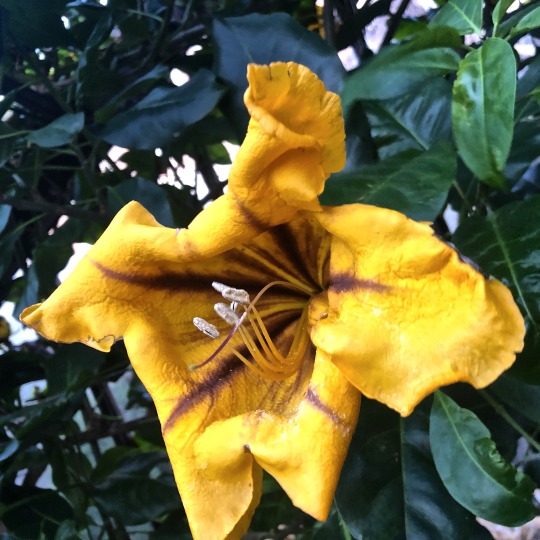
common name(s) - chalice vine, golden chalice vine, cup of gold vine; Spanish: capa de oro synonym(s) - Datura maxima Moc. & Sessé ex Dunal; Datura maxima Sessé & Moc. [Illegitimate]; Solandra hartwegii C.F. Ball; Solandra nitida Zuccagni; Solandra selerae Dammer ex Loes. conservation rating - none native to - Central America to Colombia location - glasshouse four, accession 2016-0362 leaves - leathery green, elliptical to 150mm flowers - fragrant at night (which attracts pollinating bats), bell-shaped, yellow to orange with purple stripes in the middle of every petal, there are five petals, to 200mm long; fruits, rarely seen in cultivation, are round berries, about 35mm in diameter habit - perennial evergreen shrubby climber, liana, to 200m long habitat - dry-to-moist forests in open areas from 1,300m to 2,600m in altitude pests - no information found disease - generally disease-free hardiness - to 1ºC (H3) soil - humus rich soils with a good layer of mulch to help retain moisture sun - full sun propagation - stem cuttings in summer, rooted with bottom heat pruning - responds well to hard pruning which should be done in early winter nomenclature - Solanaceae - solanum - comforter, an ancient Latin name in Pliny; Solandra - to honour 18th century Swedish botanist, Daniel Carlsson Solander FRS (1736-82) who was one of Linnaeus' favourite students and best friend of Sir Joseph Banks and in 1768 Solander embarked with Banks on Captain James Cook's travels around the world on the HMS Endeavour.; maxima - largest, greatest, superlative of magnus NB - extract from this species is said to be used for its hallucinogenic effects in ceremonies of the Huichol people from Mexico. It apparently pre-dates the similar use of peyote cactus in ceremonies
References, bibliography:
Eden Project [online] https://www.edenproject.com/learn/for-everyone/plant-profiles/golden-chalice-vine [4 Jan 20]
GardensOnline [online] https://www.gardensonline.com.au/GardenShed/PlantFinder/Show_1591.aspx [4 Jan 20]
Gledhill, David, (2008) “The Names of Plants”, fourth edition; Cambridge University Press; ISBN: 978-0-52168-553-5
Grow Plants [online] https://www.growplants.org/growing/solandra-maxima [4 Jan 20]
IUCN [online] http://www.iucnredlist.org/search [4 Jan 20]
Plant List, The [online] http://www.theplantlist.org/tpl1.1/record/kew-2579596 [4 Jan 20]
Plants of the World [online] http://plantsoftheworldonline.org/taxon/urn:lsid:ipni.org:names:818078-1 [4 Jan 20]
San Marcos Growers [online] https://www.smgrowers.com/products/plants/plantdisplay.asp?plant_id=1508 [2 Jan 20]
Tropicals [online] https://toptropicals.com/catalog/uid/SOLANDRA_MAXIMA.htm [4 Jan 20]
0 notes
Text
Flowers for Algernon
As I see the news, snow in Paris and the North-East, and read your posts, oh my friends in the North, I thought I would share a few flowers with you guys before Algernon eats them. Have faith. Spring will come. Above: Alcatraces. Zantedeschia Aethiopica. (Sounds very impressive) Jacaranda. February-March are normally glorious months for jacarandas here, but January and February were too cold for…
View On WordPress
#Alcatraces#Azalea#Bugainvillea#Copa de oro#Flowers#Flowers for Algernon#Hibiscus#jacaranda#lemon flower#Orchid#Solandra maxima
0 notes
Text
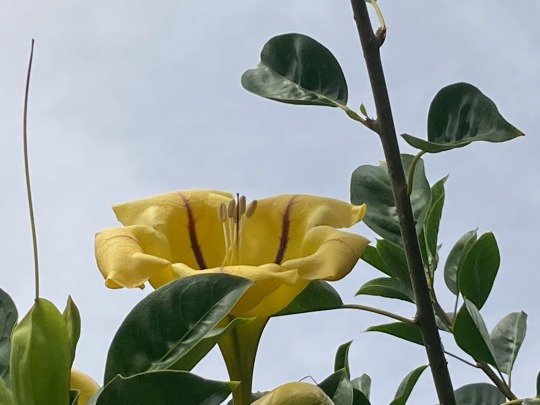
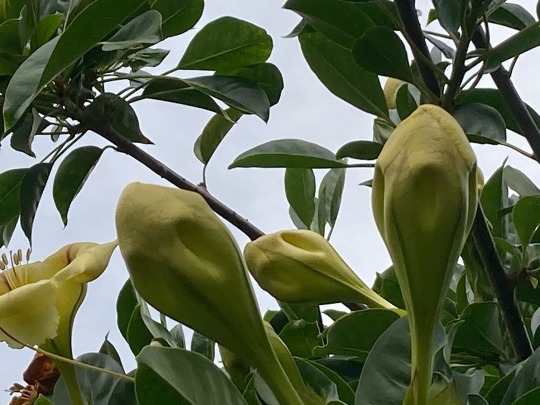
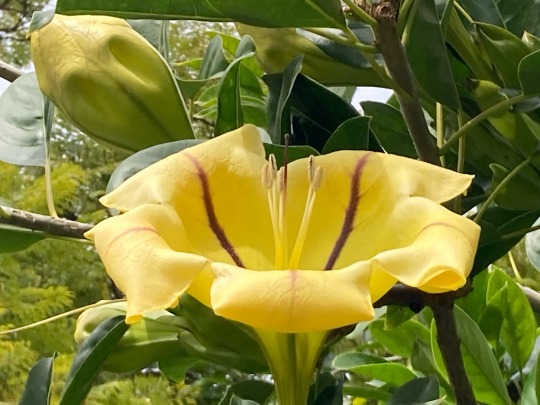
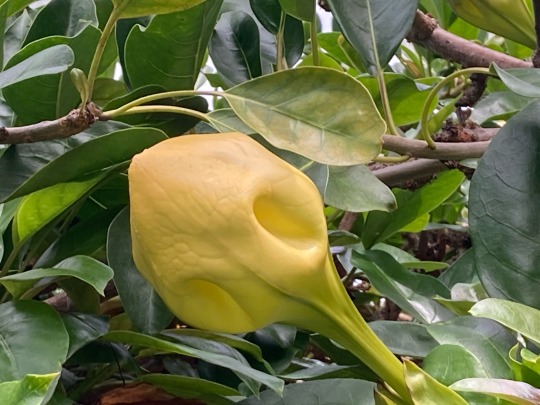
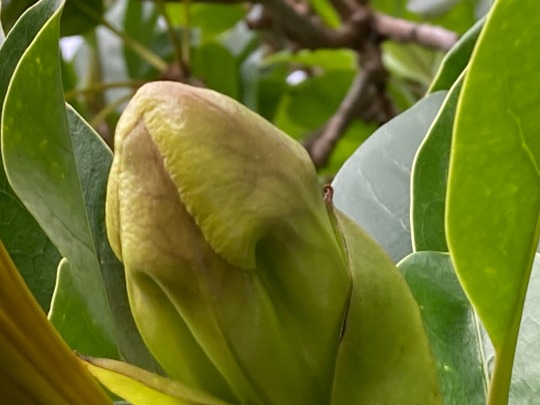
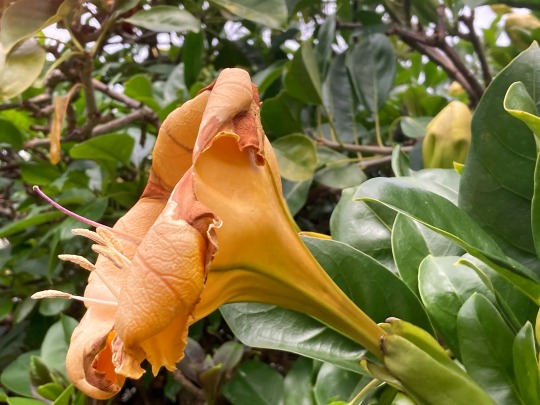
#chalice vine#cup of gold#solandra maxima#flowering vines#toxic plants#stamens#anthers#pollen#flower buds#balboa park#san diego
6 notes
·
View notes
Photo
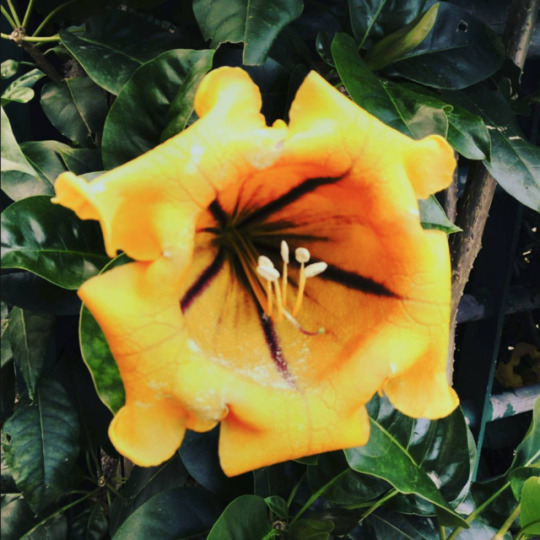
Nome: Solandra
Nome científico: Solandra maxima
Família: Solanaceae
Tipo de planta: Trepadeira
Origem: México
0 notes
Photo

Solandra maxima o grandiflora. Psicotrópica, shamanica, poderosa!!! https://www.instagram.com/p/BxoJKfdJONU/?igshid=15p6bo6x7d7w4
2 notes
·
View notes
Text
Cup of gold vine, a species of Chalice
vines
Also known as:
• Golden chalice vine
• Hawaiian lily
Botanical name: Solandra maxima
A hardy, heavy vine, the cup of gold vine needs a sturdy structure to grow on and show off its 6 inches yellow blooms. These flowers have a fragrance similar to the sweet scent of bananas. This vine can grow up to 50 feet long or it can be pruned into more of a shrub shape.
32 Beechwood Road, Rothesay Bay, Auckland 0630
7PJX+MV9 Auckland
-36.7183390, 174.7497330
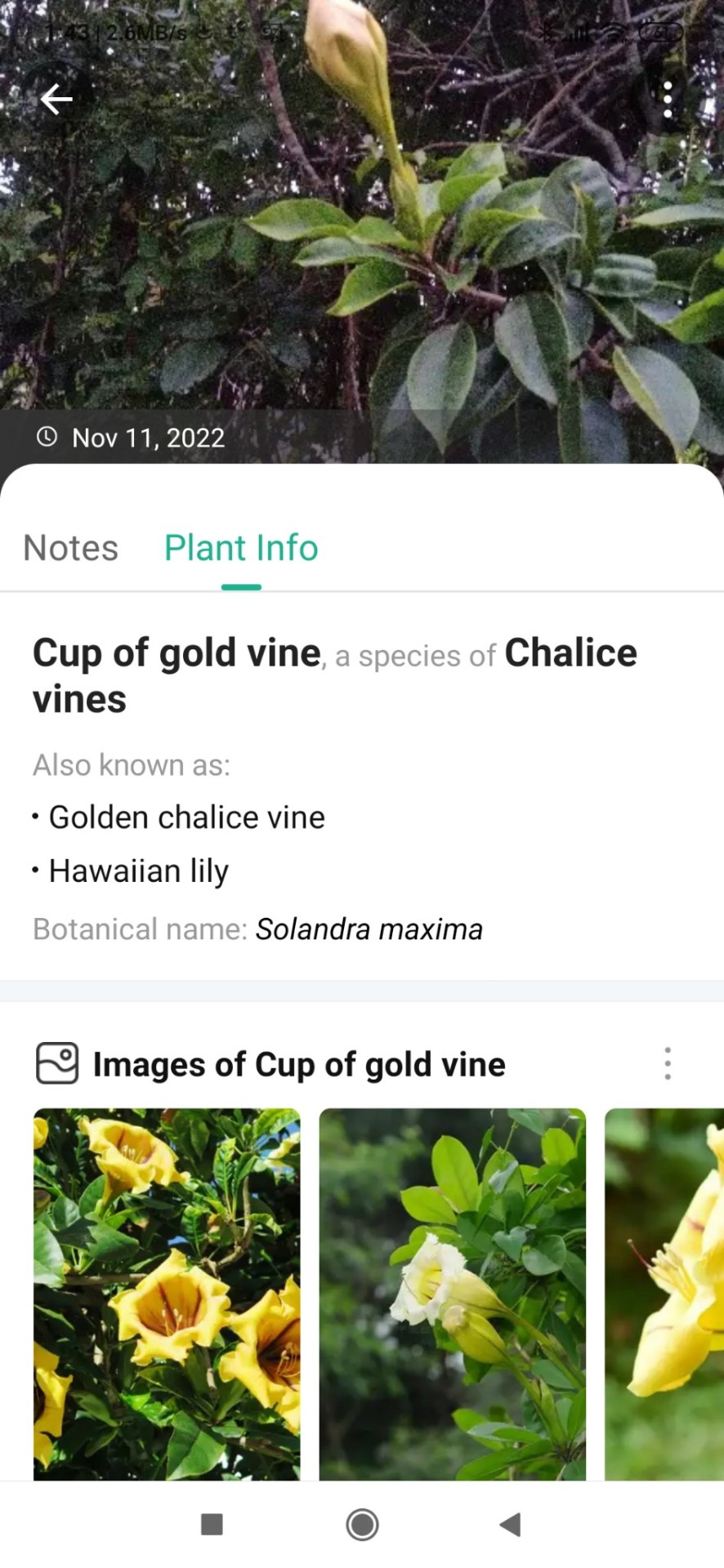

0 notes
Text
Solandra-amarela (Solandra maxima)

Nome Científico: Solandra maxima Nomes Populares: Solandra-amarela, Cálice-amarelo Família: Solanaceae Categoria: Arbustos, Arbustos Tropicais, Trepadeiras Origem: América Central, América do Norte, América do Sul, México Clima: Equatorial, Mediterrâneo, Oceânico, Subtropical, Tropical Altura: 9 a 12 metros Luminosidade: Meia Sombra, Sol Pleno Ciclo de Vida: Perene
Sobre a Solandra-amarela ou Cálice-amarelo
A Solandra-amarela é um arbusto trepador perene conhecido como Trompetista gigante devido à sua envergadura e pela aparência original e tamanho considerável das suas flores. São nativas da América tropical, onde crescem em florestas frondosa , geralmente apoiadas em árvores que cresçam á beira dos cursos de água. Deve ser cultivada sob sol pleno, em solo fértil, drenável, enriquecido com matéria orgânica e irrigado regularmente. Tolera um pouco de meia sombra, mas isso pode acarretar redução no florescimento. Plante em local protegido de ventos fortes, que ocasionam queimaduras nas folhas.

Coloque-o num local a pleno sol ou sombra parcial e evite os encharcamentos: regue mais frequentemente no verão e diminua a frequência no inverno, já que pode suportar alguma seca e o excesso de rega pode favorecer um maior crescimento vegetativo em detrimento das flores. O mesmo pode acontecer se o fertilizar em excesso, pelo que preste especial atenção a esta tarefa durante o período de floração e não aplique mais do que o necessário. A Solandra-amarela é uma planta de clima ameno, de modo que não suporta o frio intenso. Pode tolerar temperaturas de -3ºC, desde que não se prolonguem por muito tempo e que não se repita muitas vezes. Se quiser controlar o desenvolvimento ou criar novos ramos para gerar mais sombra, pode podar em qualquer época do ano.

A Solandra Maxima, planta trepadeira, com flores amarelas que dão belos pormenores na folhagem lustrosa. Cresce rápido e é fácil de reproduzir por estaca. Não obstante a floração exuberante, a solandra-amarela também apresenta uma folhagem bastante decorativa e densa. Ela gosta de muito espaço e pode ser utilizada para coroar muros, em cercas, pórticos, treliças, entre outras estruturas, desde que sejam robustas e reforçadas, pois trata-se de uma trepadeira lenhosa e frondosa, que pode alcançar um porte grande. https://youtu.be/dBxSy_0J8Ls Assim, se decidir cultivar esta trepadora, descobrirá o magnífico encanto da combinação do seu tamanho, das suas curiosas e enormes flores amarelas com o seu agradável perfume nocturno. As flores costumam ser mais perfumadas à noite, com um aroma que lembra banana madura a coco, e atrai morcegos, os seus polinizadores. Raramente frutifica em cultivo, produzindo frutos do tipo baga, redondos, carnosos e não comestíveis. Mais info: https://pt.wikipedia.org/wiki/Solandra Read the full article
0 notes
Photo

Reverse Google search was stumped but regular Google search on "giant yellow flower Hawaii" nailed it. At 8 inches across, meet Solandra maxima, which is now my drag name. Cup of gold vine, golden chalice vine, and as of now Giant Yellow Flower Hawaii. The picture is cut off because it was a foot above my head. https://www.instagram.com/p/COWxAmkLTnu/?igshid=1x98u6oi0yu9h
0 notes
